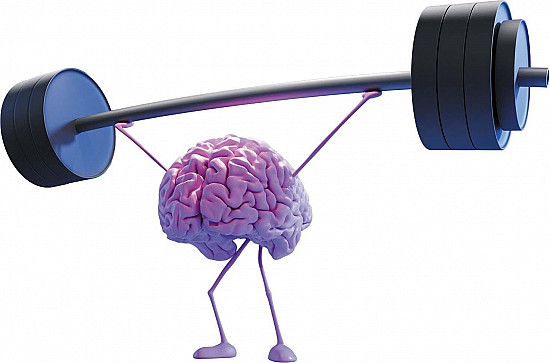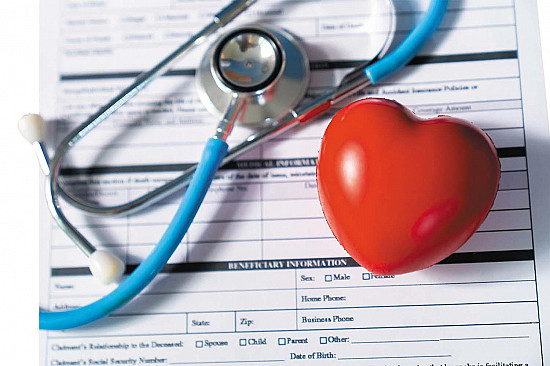Thrombotic stroke
- Reviewed by Robert H. Shmerling, MD, Senior Faculty Editor, Harvard Health Publishing; Editorial Advisory Board Member, Harvard Health Publishing
What is a thrombotic stroke?
In a thrombotic stroke, a blood clot (thrombus) forms inside one of the brain's arteries. The clot blocks blood flow to a part of the brain. This causes brain cells in that area to stop functioning and die quickly.
The blood clot that triggers a thrombotic stroke usually forms inside an artery that already has been narrowed by atherosclerosis. This is a condition in which fatty deposits (plaques) build up inside blood vessels.
Thrombotic strokes can affect large or small arteries in the brain. Strokes that affect large arteries block flow to greater portions of the brain. These strokes tend to cause the most disability.
When a thrombotic stroke occurs in a small artery, the artery is usually one that is deep within the brain. This stroke is more specifically named a lacunar stroke. Lacunar strokes often have minimal symptoms because only a small part of the brain is affected.
Another type of stroke — embolic stroke — is also caused by a blood clot. However, in an embolic stroke, the blood clot forms somewhere else in the body most commonly from the heart. It then travels through the bloodstream to the brain artery.
At first, it can be impossible for a doctor to determine which type of stroke a person is having because the symptoms can be identical.
A much less common cause of thrombotic stroke is migraine headache. In especially severe cases, a migraine headache can cause a brain artery to go into spasm for a long time. This can allow a blood clot to form.
About half of all strokes are thrombotic strokes. The factors that increase your risk of having a thrombotic stroke are
- a family history of thrombotic stroke
- diabetes
- high blood pressure (hypertension)
- high cholesterol
- smoking.
Symptoms of thrombotic stroke
The symptoms of a thrombotic stroke vary, depending on which area of the brain is affected. That is because different areas of the brain are responsible for different functions. For example, different areas of the brain control movement, sight, speech, balance, and coordination.
Symptoms can include
- headache
- dizziness or confusion
- weakness or paralysis on one side of the body
- sudden, severe numbness in any part of the body
- visual disturbance, including sudden loss of vision
- difficulty walking, including staggering or veering
- coordination problems in the arms and hands
- slurred speech or inability to speak.
If any of these symptoms appear suddenly, you may be having a thrombotic stroke or any other kind of stroke. Symptoms, once they begin, can quickly become less prominent, stay the same, or gradually get worse over hours or days.
Often, brief episodes of strokelike symptoms occur before a stroke. A short episode of strokelike symptoms is called a transient ischemic attack (TIA). Symptoms appear suddenly and then get better over several minutes to a couple of hours. Most TIAs last less than 30 minutes. One or more of these attacks occurs before more than half of all strokes.
Diagnosing thrombotic stroke
To diagnose a stroke, your doctor will need an image of your brain. Two different brain imaging tests can be useful. They are a computed tomography (CT) scan and magnetic resonance imaging (MRI) scan. Usually the CT scan is done first because it can be obtained more quickly than an MRI.
If the CT scan shows bleeding in or around the brain, then you have had a hemorrhagic stroke. A hemorrhagic stroke is treated differently than a stroke caused by a blood clot.
If the CT scan does not show any bleeding, then the stroke is presumed to be caused by a blocked artery from a blood clot. This is known as an ischemic stroke. An ischemic stroke can be either thrombotic or embolic.
When available, an MRI is performed to confirm brain injury changes consistent with a new ischemic stroke. In some cases, an angiogram (an imaging test of arteries) is performed to identify which blood vessel has a blockage; angiograms can be combined with a CT scan (CT-angiogram, or CTA) or an MRI scan (MR-angiogram, or MRA).
Your doctor will want to know exactly when the symptoms started because that can affect the choice of treatment (see below). Your doctor also will try to determine whether the stroke is thrombotic or embolic. This is an important distinction because therapy for a thrombotic stroke is different from an embolic stroke.
Your doctor will examine you. He or she will check your pulse and blood pressure, perform a thorough a neurological exam, and examine your heart and neck arteries.
In addition to imaging of the brain, your doctor will order blood tests and an electrocardiogram (EKG), and heart rhythm monitoring. If the EKG or heart monitoring shows an abnormal heart rhythm, such as atrial fibrillation, this suggests that the stroke could be embolic.
Other tests may include
- chest x-ray
- Doppler ultrasound of the carotid arteries
- echocardiogram.
Expected duration of thrombotic stroke
Recovery depends on how long blood flow to the brain is blocked.
If blood circulation in the brain is restored within minutes to a few hours, the person can recover rapidly and completely, within hours to a day. For a small thrombotic stroke (lacunar stroke), symptoms often improve within a few days, even if the blood clot has not dissolved.
When the blood supply is interrupted for longer periods of time, brain injury can be more severe. Symptoms may last for many months. Physical rehabilitation may be necessary.
In some cases, permanent brain damage causes permanent disability.
Preventing thrombotic stroke
If you have had one stroke, you have a high risk of having another.
You can help to prevent thrombotic strokes. You and your doctor should carefully manage the factors that put you at risk of atherosclerosis.
Risk factors for atherosclerosis include:
- High blood pressure. Treating high blood pressure with almost any medication reduces the risk of stroke. Several medicines have been shown to have an especially strong benefit. These include
- thiazide diuretics
- hydrochlorothiazide (Oretic, HydroDiuril)
- chlorthalidone (Hygroton, Thalitone)
- angiotensin-converting–enzyme (ACE) inhibitors
- enalapril (Vasotec)
- ramipril (Altace)
- captopril (Capoten)
- lisinopril (Prinivil, Zestril).
- thiazide diuretics
- High cholesterol. If you have high cholesterol (especially LDL cholesterol), you should take steps to reduce it through changes in lifestyle (see below) and, when needed, medications. Cholesterol-lowering medications called statins are known to prevent stroke. Examples of statins include
- simvastatin (Zocor)
- pravastatin (Pravachol)
- atorvastatin (Lipitor)
- rosuvastatin (Crestor).
- Diabetes. If you have diabetes, your risk of stroke is higher and you need to lower cholesterol and blood pressure more than people who don't have diabetes. Medications to control blood sugar are an important measure that may reduce the risk of stroke.
- Sedentary lifestyle. You should exercise regularly.
- Unhealthy diet. The healthiest diets tend to be plant-based (such as the Mediterranean diet) and are high in fruits and vegetables, and include monounsaturated oils such as olive oil. Avoid unhealthy fats (including hydrogenated or partially hydrogenated oils) and limit saturated fats. Eating a couple of servings of fish each week may help to prevent stroke.
- Smoking. If you smoke, quit. Talk to your doctor if you are having trouble quitting on your own.
Other things you can do to reduce your risk of stroke are moderating alcohol intake and never using recreational cocaine or amphetamines.
Talk with your doctor about whether you should take aspirin every day. Aspirin (in doses as low as 80 milligrams per day) can reduce the risk of thrombotic stroke.
Other medications that prevent clots also can help. These stronger medicines are sometimes recommended to people who have already experienced a stroke. They help to prevent an additional stroke event. These drugs include dipyridamole (usually as a drug combined with aspirin called Aggrenox) and clopidogrel (Plavix).
If you have complex migraine with major neurological symptoms that happen during an attack, your doctor may advise not using certain medicines such as triptans. This class of medicines includes sumatriptan (Imitrex), rizatriptan (Maxalt), and others. Taking these medications when you have neurologic symptoms may increase your risk of stroke.
Treating thrombotic stroke
The most effective treatment for ischemic stroke is a clot-busting drug such as tissue plasminogen activator (t-PA). The drug must be given within several hours after stroke symptoms begin. For this reason, it is important to seek emergency treatment immediately if you have symptoms of a stroke. Do not wait to see if the symptoms go away on their own.
Clot-busting drugs such as tissue plasminogen activator (t-PA) are administered through an intravenous line (IV) into a vein. This medicine can dissolve clots and restore blood flow in the brain. On average, patients who receive this medication have less long-term disability following a stroke.
An alternative to treatment with a clot-busting drug is catheter removal of the clot with a special device. To be effective, the procedure must be performed within several hours of symptom onset.
Later, another type of medication, such as heparin, is given. Heparin prevents existing blood clots from getting bigger, and it prevents new clots from forming.
Longer term, treatment depends upon whether the stroke was thrombotic or embolic. For a thrombotic stroke, doctors usually prescribe an anti-platelet agent such as
- aspirin
- clopidogrel (Plavix)
- aspirin combined with dipyridamole (Aggrenox).
For an embolic stroke caused by a clot that formed in the heart and traveled to the brain, doctors prescribe an oral anti-coagulant drug. In the past, they almost always prescribed warfarin (Coumadin). Now there are new direct oral anti-coagulants available such as apixaban, dabigatran, and rivaroxaban.
A person who has had a significant stroke should be hospitalized so he or she can be observed in case symptoms get worse. A person who has had a severe stroke may need a mechanical ventilator to help with breathing. A stroke patient also may need help with self-care or feeding.
In the hospital, a person who has had a stroke can meet with occupational and physical therapists. These therapists can help the person learn to work around a new disability and to regain strength. Often, a person will move from the hospital to a rehabilitation center to get intensive therapy before returning home.
When to call a professional
If you or someone you are with develops any of the symptoms of stroke, call your medical emergency hotline (911 in the United States). Transport to an emergency department needs to occur right away. It is important to have an evaluation even if your symptoms last only a few minutes. A TIA can be a warning sign of stroke in the near future.
Prognosis
If the brain's blood supply is restored quickly and completely, it is possible to recover from a stroke with little or no disability. People with symptoms that start to resolve quickly after the onset of a stroke have an excellent prognosis. The prognosis for recovery is less favorable when stroke symptoms become more prominent over the first 24 to 48 hours.
Additional info
National Institute of Neurological Disorders and Stroke
https://www.ninds.nih.gov/
National Stroke Association
https://www.stroke.org/
About the Reviewer

Robert H. Shmerling, MD, Senior Faculty Editor, Harvard Health Publishing; Editorial Advisory Board Member, Harvard Health Publishing
Disclaimer:
As a service to our readers, Harvard Health Publishing provides access to our library of archived content. Please note the date of last review or update on all articles.
No content on this site, regardless of date, should ever be used as a substitute for direct medical advice from your doctor or other qualified clinician.















